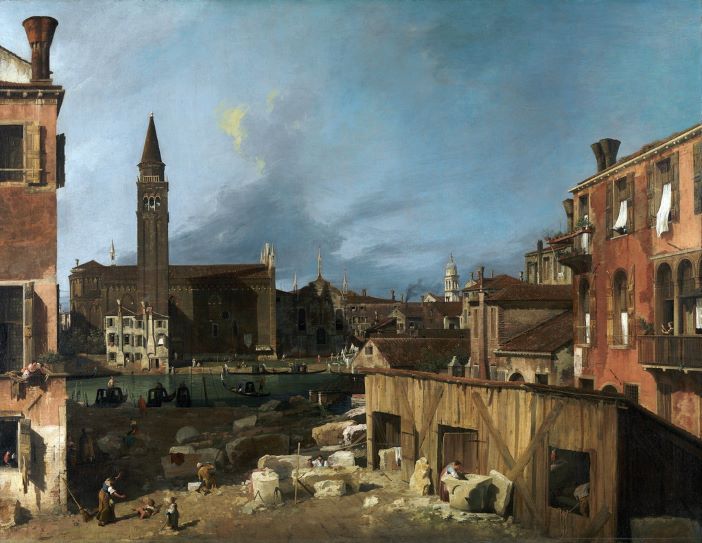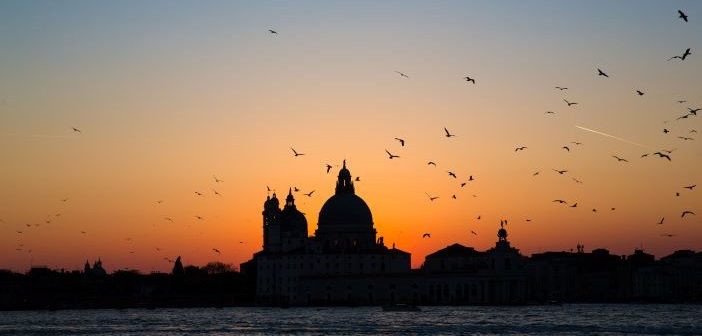It is a brave writer who takes on Venice, La Serenissima, given the long list of distinguished predecessors in whose footsteps he or she must tread, not least those of John Julius Norwich and Jan Morris, let alone the Victorian sage John Ruskin and his ‘The Stones of Venice’. Jonathan Keates, the author of La Serenissima, is well aware of the challenge involved. Indeed, he starts his brief introduction with the comment made by Goethe some fifty years before Ruskin was writing that ‘about Venice everything that can be said has been said and printed’. Despite Goethe’s stricture and the legacy of Ruskin, Keates’ version of the story of Venice is well worth reading.
 It is written as a fast-paced adventure story, full of colourful anecdotes and unusual characters, in which triumph and disaster often walk side by side. Above all it is a celebration of this remarkable city and its turbulent history. A history that starts as a refugee hideout in the marshes from the barbarian hordes overwhelming the Roman Empire; becomes one of the great trading powers of the Mediterranean and cultural centres of Europe; before descending into a political nonentity and a playground for the bohemian and the rich. A still beautiful city that now finds itself confronting the challenges of increasing flooding, relentless depopulation and mass tourism accompanied by AirB&B and cruise liners.
It is written as a fast-paced adventure story, full of colourful anecdotes and unusual characters, in which triumph and disaster often walk side by side. Above all it is a celebration of this remarkable city and its turbulent history. A history that starts as a refugee hideout in the marshes from the barbarian hordes overwhelming the Roman Empire; becomes one of the great trading powers of the Mediterranean and cultural centres of Europe; before descending into a political nonentity and a playground for the bohemian and the rich. A still beautiful city that now finds itself confronting the challenges of increasing flooding, relentless depopulation and mass tourism accompanied by AirB&B and cruise liners.
Hagiographic though the book sometimes may be Keates does acknowledge the dark underbelly of the city and the present-day challenges that it confronts. The latter is hardly surprising given his chairmanship of the Venice in Peril Fund. If he does occasionally underplay the frequently brutal cynicism of Venetian foreign policy, not least its sack of Constantinople during the Fourth Crusade, its rivalry with Genoa and Verona as well as its short-lived acquisition of Cyprus, he does not neglect the equal viciousness frequently on display in its internal politics especially when the oligarchs defended their interests against an overmighty Doge or plotted against each other.
Keates also exposes its treatment of women in his chapter The Daughters of St Mark where he uses the lives of Gaspara Stampa, Veronica Franco and Sara Sullam to illustrate how even women as gifted and beautiful as these three could be exploited and brought down. It is also evident in some of the illustrations he has chosen such as Longhi’s painting entitled The Charlatan. Keates is a natural storyteller, and there are many stories to tell, not least that of the longest serving Doge Francesco Foscari and of his son Jacopo.

Pietro Longhi, ‘ Le Charlatan’ (1757), courtesy of Bemberg Foundation, Toulouse
Keates’ celebration of the glories of Venice is also reflected in the multiplicity of superb illustrations that accompany his engaging text. They include a combination of urban landscapes and photographs illustrating the architectural character of the city amongst which the paintings of Canaletto inevitably feature frequently. These cover, on the one hand, the majestic, such as the dramatic entrance to the grand canal by Canaletto.
On the other, they also cover the backstreets and working areas of city. An example of the former is illustrated with a photograph of the narrow canal bordering the old Jewish Quarter; the latter with Canaletto’s painting of the Stonemason’s Yard. The illustrations also include some wonderful interiors, individual houses and important moments in the history of the city. There are also some classic portraits such as that of Caterina Cornaro, the last Queen of Cyprus, by Titian; Bellini’s portrait of the Sultan Mehmet II, the conqueror of Constantinople; and Strozzi’s wonderful portrait of Monteverdi, one of the greatest of Venetian composers.

Canaletto, The Stonemason’s Yard (1725), National Gallery, London
It is perhaps noteworthy of the changing fortunes of the city that the balance of the portraits changes from those of powerful politicians, soldiers and admirals to those of artists, business people and socialites and from paintings to photographs as the Stato del Mar disappeared and the city came under the rule of others – Napoleonic France, Habsburg Austria and finally the Italian state created by the Risorgimento. In short, it is a beautifully produced book and the publishers are to be congratulated for the way in which they have enabled John Keates both to illustrate his story and celebrate the manifold beauties of his beloved city.
La Serenissima by Jonathan Keates is available now in hardback, published by Head of Zeus. The paperback is released on 9th November 2023. For more information, please visit www.headofzeus.com.
Header photo by by Luca Micheli on Unsplash




